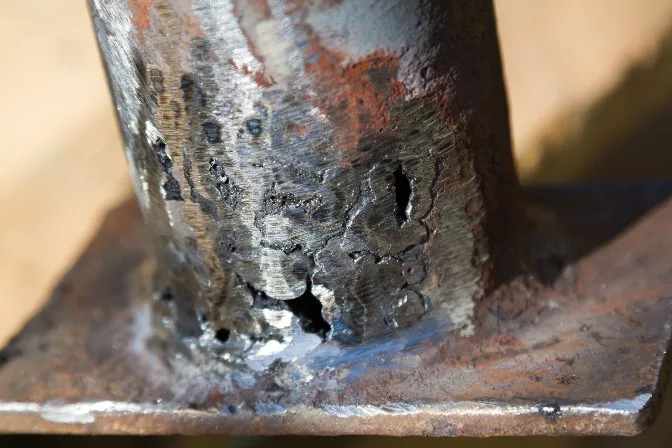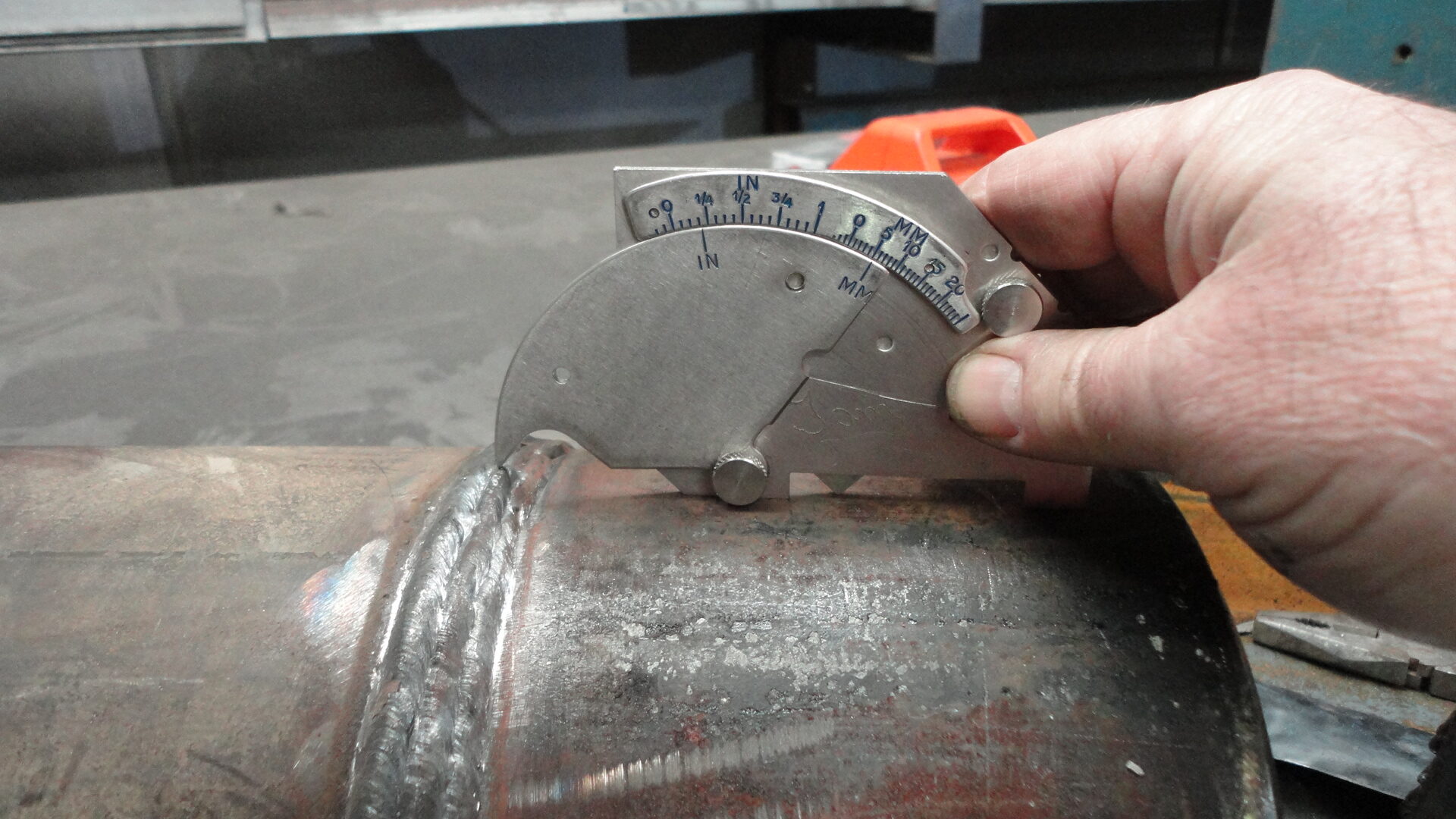Necessary Tips for Effective Welding Inspection Madison Providers
Wiki Article
Discovering Advanced Equipment and Approaches for Accurate Welding Inspection
In the world of welding inspection, the quest of precision and integrity is vital, spurring the growth of cutting-edge tools and methods. Laser scanning innovations and automated inspection systems, equipped with artificial knowledge, are redefining the landscape by minimizing human error and improving safety and security procedures.Ultrasonic Testing Technologies
Ultrasonic testing advancements regularly represent the forefront of advancements in welding examination modern technologies. These innovations have actually significantly enhanced the capability to discover and examine discontinuities within welded frameworks, making certain enhanced stability and security - Welding Inspection Madison. Ultrasonic testing uses high-frequency sound waves to permeate materials, giving comprehensive info regarding inner functions without causing damage. The most recent developments in this field have actually concentrated on boosting accuracy, rate, and the capacity to analyze complicated information.
In addition, innovations in software application formulas for data evaluation have boosted the accuracy of flaw discovery and sizing. Automated ultrasonic testing systems now offer high-resolution imaging, enabling in-depth evaluations of weld top quality. These systems are frequently incorporated with innovative visualization devices, which facilitate the interpretation of results.
Radiographic Inspection Techniques
While ultrasonic screening innovations have actually established a high standard in non-destructive examination, radiographic assessment techniques proceed to play an indispensable duty in welding assessment by providing distinct understandings right into product stability. Radiographic screening (RT) uses using X-rays or gamma rays to permeate materials, producing a radiograph that aesthetically represents the interior framework of a weld. This imaging ability is indispensable for detecting subsurface flaws such as porosity, incorporations, and fractures that might not be visible through surface assessments.The procedure entails positioning a radiation resource on one side of the weld and a detector on the opposite side. Variants in material density and density influence the depletion of the rays, generating a different photo that exactly defines defects. RT is particularly beneficial for evaluating complicated geometries and thick sections where various other methods might fail.
In spite of its effectiveness, radiographic evaluation must be conducted with rigorous adherence to safety protocols because of the unsafe nature of ionizing radiation. The interpretation of radiographs needs skilled workers, as the high quality of the analysis directly impacts the dependability of the evaluation. Continuous advancements in electronic radiography are boosting photo clearness and analysis performance, enhancing RT's critical role in making sure weld top quality.
Laser Scanning Advances
Embracing laser scanning modern technology in welding assessment has actually transformed the analysis of weld top quality and integrity. Unlike traditional examination strategies, laser scanning gives quick data procurement, substantially boosting the performance and precision of weld assessments.Laser scanning breakthroughs have caused substantial improvements in finding and characterizing surface area flaws such as porosity, absence of combination, and undercuts. The high-resolution data this allows assessors to carry out comprehensive analyses, guaranteeing that welds fulfill stringent industry criteria. Additionally, this method supports the growth of electronic records, facilitating long-term quality control and traceability.
In addition, laser scanning technology integrates effortlessly with software application solutions made for automated problem detection and assessment. The resultant data can be quickly shared and assessed, advertising collaborative decision-making procedures. As sectors proceed to demand higher standards for weld high quality, laser scanning continues to be at the center, supplying unrivaled accuracy and performance in welding evaluation.
Automated Inspection Solutions

Automated assessment systems use the you can try these out benefit of consistency, eliminating human mistake and subjectivity from the examination process. They are designed to operate in numerous settings, from production floorings to remote area sites, making sure extensive protection. Welding Inspection Madison. These systems can be programmed to abide by certain welding requirements and requirements, supplying in-depth records and documents for quality control functions
In addition, the combination of cloud-based systems facilitates the storage space and evaluation of huge amounts of inspection information. This enables trend evaluation and predictive upkeep, permitting manufacturers to address prospective problems prior to they escalate. The adoption of computerized assessment systems is an essential step in the direction of improving the dependability and performance of welding procedures in industrial applications.

Enhancing Security and Performance
A significant element of improving safety and security and performance in welding assessment hinges on the combination of innovative innovations that simplify procedures and reduce threats. The adoption of innovative non-destructive testing (NDT) approaches, such as ultrasonic testing, phased selection ultrasonic screening (PAUT), and radiographic screening, plays a critical role in making sure architectural integrity without jeopardizing the safety of the employees entailed. These methods enable detailed examinations with marginal downtime, reducing potential risks connected with traditional methods.Furthermore, the application of real-time data analytics and machine understanding formulas has actually transformed the way assessment data is analyzed. By employing anticipating analytics, prospective defects can be identified before they manifest right into important failures, making sure prompt interventions and maintenance. This aggressive strategy considerably improves functional effectiveness and safety in welding processes.
In addition, remote assessment technologies, consisting of drones and robotic spiders outfitted with high-resolution cameras, make it possible for inspectors to evaluate hard-to-reach locations without subjecting them to hazardous conditions. This not only improves evaluation accuracy but also decreases human danger. By leveraging these innovative devices and techniques, markets can achieve higher safety and security standards and operational performance, inevitably resulting in even more lasting and reliable welding inspection techniques.
Conclusion
The combination of advanced devices and methods in welding examination considerably improves flaw detection and makes sure architectural stability. Welding Inspection Madison. Developments such as phased selection ultrasonic screening, electronic radiography, and laser scanning enhance issue characterization, while automated examination systems and AI reduce human error. Remote modern technologies assist in safe assessments in harmful environments, promoting a proactive maintenance strategy. These innovations not just increase examination performance however additionally contribute to improved security and quality guarantee in commercial welding applications.
Ultrasonic testing technologies frequently represent the center of advancements in welding inspection innovations.While ultrasonic testing technologies have set a high criterion in non-destructive examination, radiographic examination strategies proceed to play an essential role in welding inspection by providing unique understandings right into product honesty.Accepting laser scanning innovation in welding examination has actually reinvented the assessment of weld high quality and honesty. As industries proceed to require use this link greater requirements for weld high quality, laser scanning continues to be at the forefront, offering unmatched accuracy and efficiency in welding assessment.
Automated assessment systems provide the benefit of consistency, getting rid of human error and subjectivity from the inspection process.
Report this wiki page